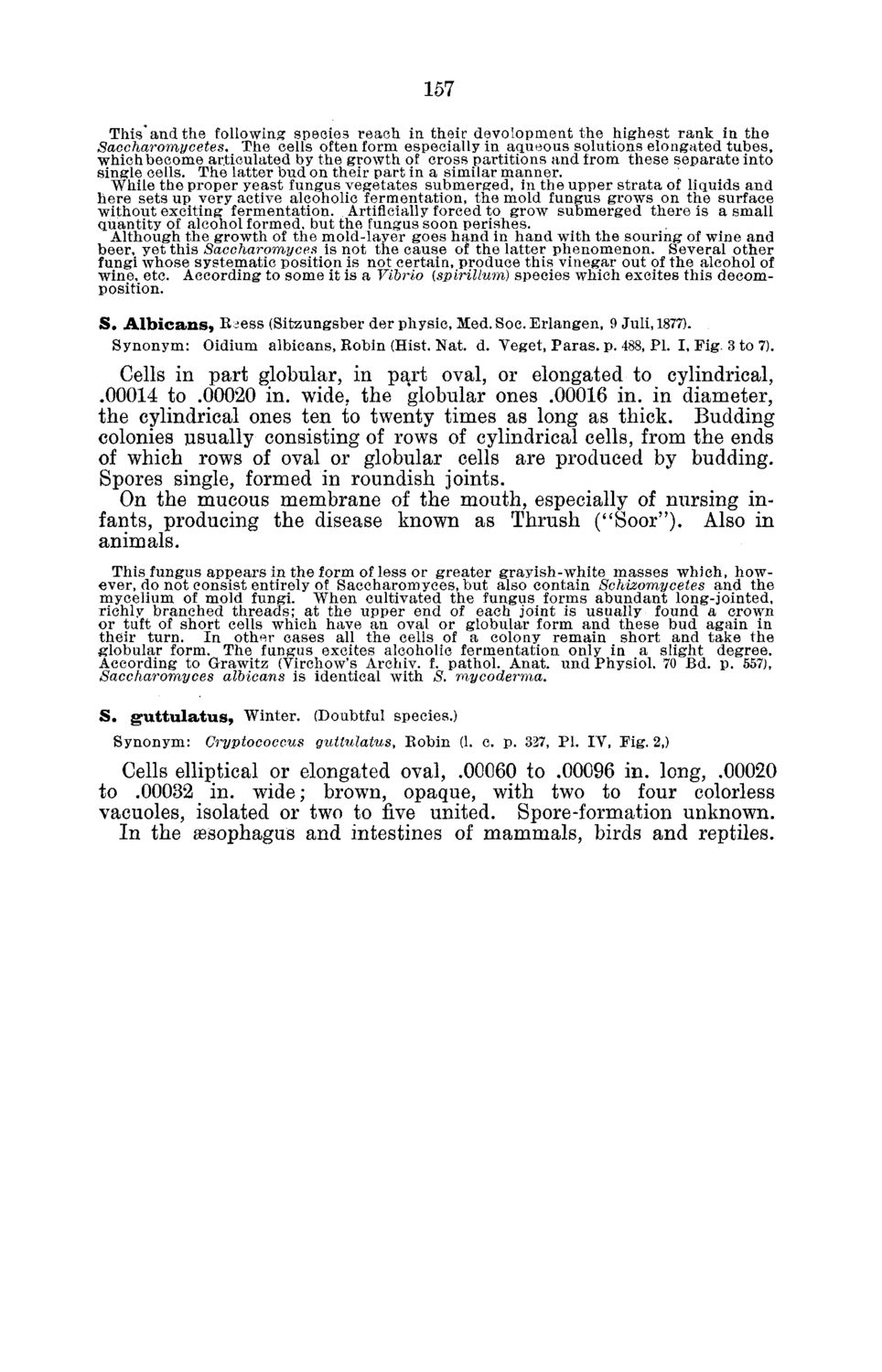| |
| |
Caption: Board of Trustees Minutes - 1882
This is a reduced-resolution page image for fast online browsing.

EXTRACTED TEXT FROM PAGE:
157 This and the following species reach in their devolopment the highest rank in the Saccharomycetes. The cells often form especially in aqueous solutions elongated tubes, which become articulated by the growth of cross partitions and from these separate into single cells. The latter bud on their part in a similar manner. While the proper yeast fungus vegetates submerged, in the upper strata of liquids and here sets up very active alcoholic fermentation, the mold fungus grows on the surface without exciting fermentation. Artificially forced to grow submerged there is a small quantity of alcohol formed, but the fungus soon perishes. Although the growth of the mold-layer goes hand in hand with the souring of wine and beer, yet this Saccharomyces is not the cause of the latter phenomenon. Several other fungi whose systematic position is not certain, produce this vinegar out of the alcohol of wine, etc. According to some it is a Vibrio {spirillum) species which excites this decomposition. S . A l b i c a n s ) R-ess (Sitzungsber der physic, Med. Soc. Erlangen, 9 Juli,1877). Synonym: Oidium albicans, Robin (Hist. Nat. d. Veget, Paras, p. 488, PI. I, Fig. 3 to 7). Cells in part globular, in part oval, or elongated to cylindrical, .00014 to .00020 in. wide, the globular ones .00016 in. in diameter, the cylindrical ones ten to twenty times as long as thick. Budding colonies usually consisting of rows of cylindrical cells, from the ends of which rows of oval or globular cells are produced by budding. Spores single, formed in roundish joints. On the mucous membrane of the mouth, especially of nursing infants, producing the disease known as Thrush ("Soor"). Also in animals. This fungus appears in the form of less or greater grayish-white masses which, however, do not consist entirely of Saccharomyces, but also contain Schizomycetes and the mycelium of mold fungi. When cultivated the fungus forms abundant long-jointed, richly branched threads; at the upper end of each joint is usually found a crown or tuft of short ceils which have an oval or globular form and these bud again in their turn. In other cases all the cells of a colony remain short and take the globular form. The fungus excites alcoholic fermentation only in a slight degree. According to Grawitz (Virchow's Archiv. f. pathol. Anat. und Physiol. 70 Bd. p. 557), Saccharomyces albicans is identical with S. mycoderma. S . g u t t u l a t u s , Winter. (Doubtful species.) Synonym: Cryptococcus guttulatus, Robin (1. c. p. 327, PI. IV, Fig. 2,) Cells elliptical or elongated oval, .00060 to .00096 in. long, .00020 to .00032 in. wide; brown, opaque, with two to four colorless vacuoles, isolated or two to five united. Spore-formation unknown. In the aesophagus and intestines of mammals, birds and reptiles.
| |